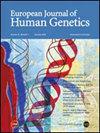Investigation of a pathogenic inversion in UNC13D and comprehensive analysis of chromosomal inversions across diverse datasets
IF 4.6
2区 生物学
Q2 BIOCHEMISTRY & MOLECULAR BIOLOGY
引用次数: 0
Abstract
Inversions are known contributors to the pathogenesis of genetic diseases. Identifying inversions poses significant challenges, making it one of the most demanding structural variants (SVs) to detect and interpret. Recent advancements in sequencing technologies and the development of publicly available SV datasets have substantially enhanced our capability to explore inversions. However, a cross-comparison in those datasets remains unexplored. In this study, we reported a proband with familial hemophagocytic lymphohistiocytosis type-3 carrying a splicing variant (c.1389+1G>A) in trans with an inversion present in 0.006345% of individuals in gnomAD (v4.0) that disrupts UNC13D. Based on this result, we investigate the features of potentially pathogenic inversions in gnomAD which revealed 98.9% of them are rare and disrupt 5% of protein-coding genes associated with a phenotype in OMIM. We then conducted a comparative analysis of additional public datasets, including DGV, 1KGP, and two recent studies from the Human Genome Structural Variation Consortium which revealed common and dataset-specific inversion characteristics suggesting methodology detection biases. Next, we investigated the genetic features of inversions disrupting the protein-coding genes. Notably, we found that the majority of protein-coding genes in OMIM disrupted by inversions are associated with autosomal recessive phenotypes supporting the hypothesis that inversions in trans with other variants are potential hidden causes of monogenic diseases. This effort aims to fill the gap in our understanding of the molecular characteristics of inversions with low frequency in the population and highlight the importance of identifying them in rare disease studies.

调查 UNC13D 中的致病倒位,全面分析不同数据集中的染色体倒位。
倒置是已知的遗传疾病发病机制的贡献者。识别反转带来了重大挑战,使其成为检测和解释最苛刻的结构变体(sv)之一。最近测序技术的进步和公开可用的SV数据集的发展大大增强了我们探索逆转录的能力。然而,这些数据集的交叉比较仍未被探索。在这项研究中,我们报道了一个家族性噬血细胞淋巴组织细胞病3型先显子携带一个反式剪接变体(c.1389+1G> a),在0.006345%的gnomAD (v4.0)个体中存在一个逆转,破坏UNC13D。基于这一结果,我们研究了gnomAD中潜在致病性反转的特征,发现其中98.9%是罕见的,并且破坏了与OMIM表型相关的5%的蛋白质编码基因。然后,我们对其他公共数据集进行了比较分析,包括DGV、1KGP和最近来自人类基因组结构变异联盟的两项研究,这些研究揭示了共同的和特定于数据集的反演特征,表明方法检测偏差。接下来,我们研究了反转破坏蛋白质编码基因的遗传特征。值得注意的是,我们发现被反转破坏的OMIM中的大多数蛋白质编码基因与常染色体隐性表型相关,这支持了反式与其他变体的反转是单基因疾病潜在隐藏原因的假设。这项工作旨在填补我们对人群中低频率反转的分子特征的理解空白,并强调在罕见疾病研究中识别它们的重要性。
本文章由计算机程序翻译,如有差异,请以英文原文为准。
求助全文
约1分钟内获得全文
求助全文
来源期刊

European Journal of Human Genetics
生物-生化与分子生物学
CiteScore
9.90
自引率
5.80%
发文量
216
审稿时长
2 months
期刊介绍:
The European Journal of Human Genetics is the official journal of the European Society of Human Genetics, publishing high-quality, original research papers, short reports and reviews in the rapidly expanding field of human genetics and genomics. It covers molecular, clinical and cytogenetics, interfacing between advanced biomedical research and the clinician, and bridging the great diversity of facilities, resources and viewpoints in the genetics community.
Key areas include:
-Monogenic and multifactorial disorders
-Development and malformation
-Hereditary cancer
-Medical Genomics
-Gene mapping and functional studies
-Genotype-phenotype correlations
-Genetic variation and genome diversity
-Statistical and computational genetics
-Bioinformatics
-Advances in diagnostics
-Therapy and prevention
-Animal models
-Genetic services
-Community genetics
 求助内容:
求助内容: 应助结果提醒方式:
应助结果提醒方式:


